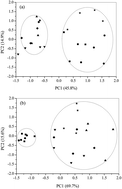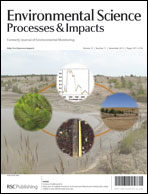An evaluation of the effectiveness of novel industrial by-products and organic wastes on heavy metal immobilization in Pb–Zn mine tailings†
Abstract
The in situ immobilization of heavy metals using various easily obtainable amendments is a cost-effective and practical method in the remediation of contaminated sites. In this study, two novel industrial waste materials (sweet sorghum vinasse and medicinal herb residues), spent mushroom compost and municipal solid wastes were used as amendments to assess their potential value for the in situ immobilization of heavy metals in tailings from a Pb-Zn mine in South China. Our results demonstrate that all three freely-available organic wastes decrease the deionized water (DW)- and diethylene-triamine-pentaacetic acid (DTPA)-extractable metal concentrations, enhance the enzyme activity, reduce the metal concentration in plant tissues, and could be used for the remediation of these Pb-Zn mine tailings metals by immobilization. The municipal solid waste failed to reduce the metal concentration in tailings and plant tissues and therefore would not be a suitable immobilizing agent. The potential value of these materials as immobilizers of heavy metals and their remediation efficacy deserve further studies in large-scale field trials.


 Please wait while we load your content...
Please wait while we load your content...